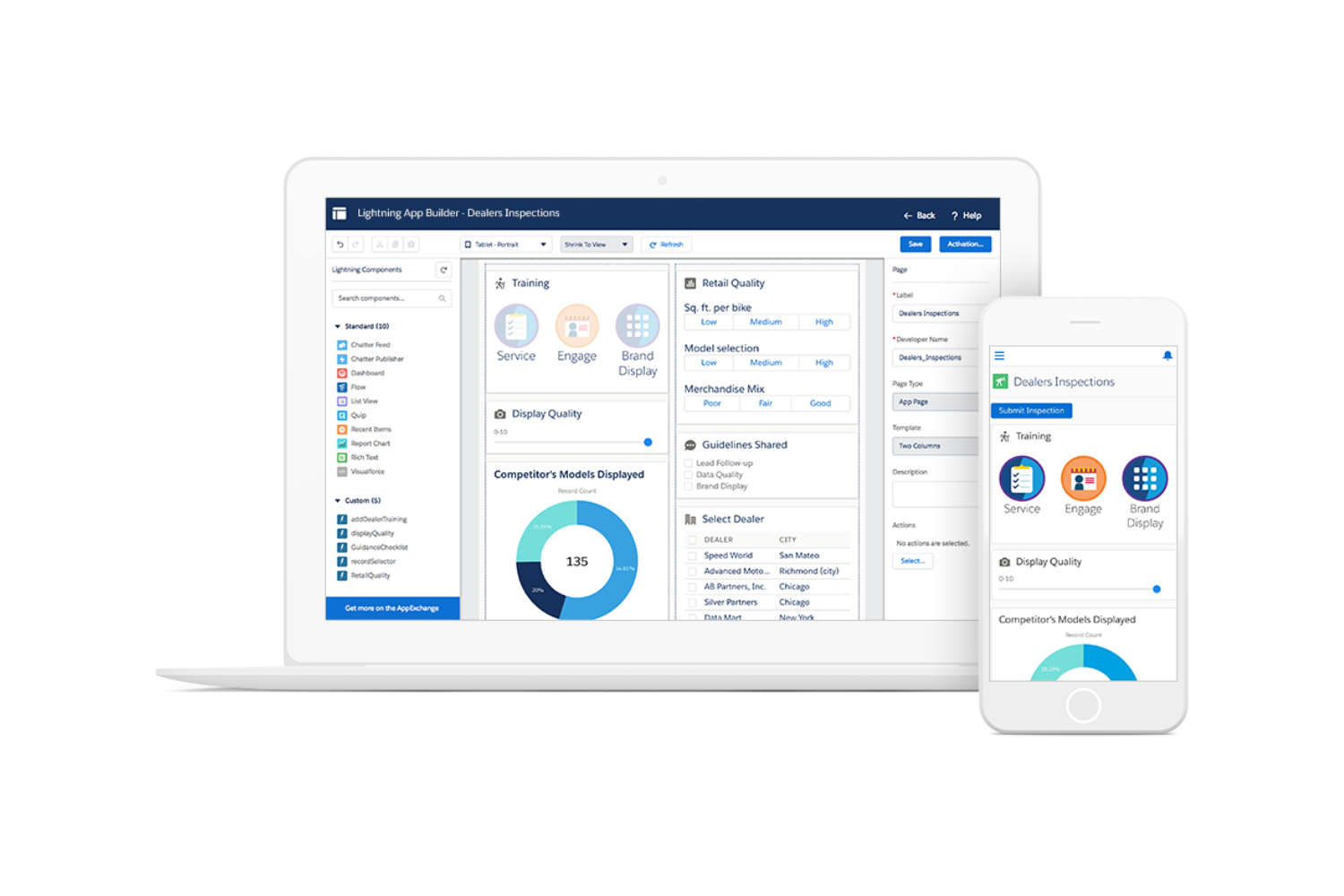Introduction
Welcome to the world of Software as a Service (SaaS), a rapidly growing industry that offers businesses various cloud-based solutions to enhance their operations and productivity. One important metric used in the SaaS industry is the Annual Contract Value (ACV). ACV is a key indicator of a SaaS company’s health and success, as it represents the average annual revenue generated from a single subscription or contract.
ACV provides valuable insights into a company’s financial performance and serves as a benchmark for growth and sustainability. By understanding ACV and its significance, both SaaS providers and customers can make informed decisions regarding pricing, scalability, and more.
In this article, we will explore the concept of ACV in SaaS, its importance, the calculation methods involved, and the factors that can affect ACV. We will also delve into the benefits of tracking ACV, the challenges in determining it accurately, and strategies to increase ACV effectively.
Whether you are a SaaS provider looking to optimize your pricing strategy or a business considering SaaS solutions, understanding ACV can help you make informed choices and navigate the dynamic SaaS landscape.
What is ACV?
Annual Contract Value (ACV) is a metric used in the Software as a Service (SaaS) industry to represent the average annual revenue generated from a single subscription or contract. It is a measure of the value derived from a customer over a year.
ACV takes into account the pricing structure and duration of a SaaS contract. It provides a more accurate representation of a customer’s value than simply looking at monthly or quarterly revenue streams. ACV allows SaaS providers to assess their financial performance, plan for growth, and make informed business decisions.
To calculate ACV, the revenue generated by a customer over a contractual period is divided by the length of the contract. For example, if a customer signs a three-year contract with a SaaS provider for $10,000 per year, the ACV would be $10,000 divided by three, resulting in an ACV of $3,333.33.
ACV is an essential metric for SaaS companies as it provides insights into the stability and growth potential of the business. By analyzing ACV, SaaS providers can understand the average revenue per customer and gain visibility into the financial impact of churn, upgrades, and new customer acquisitions.
Additionally, ACV helps SaaS providers evaluate customer segments and pricing strategies. By analyzing ACV across different customer segments, businesses can identify high-value customers, evaluate the effectiveness of pricing tiers, and tailor their offerings to meet specific customer needs.
In summary, ACV is a crucial metric in the SaaS industry that represents the average annual revenue generated from a single subscription or contract. It enables SaaS providers to analyze their financial performance, plan for growth, and make data-driven business decisions. By understanding ACV and its calculation methods, SaaS companies can optimize their pricing strategies and effectively measure customer value over time.
Why is ACV Important in SaaS?
The measurement of Annual Contract Value (ACV) holds significant importance in the Software as a Service (SaaS) industry for several reasons. Let’s explore why ACV is crucial in the realm of SaaS:
1. Financial Performance Evaluation: ACV is a key indicator of a SaaS company’s financial performance. It helps assess the revenue generated from customer contracts over a year and provides insights into the company’s ability to generate sustainable and predictable revenue streams.
2. Growth and Scalability: ACV enables SaaS providers to evaluate their growth potential. By analyzing ACVs, businesses can identify high-value customers, target specific segments, and optimize their sales and marketing strategies accordingly for sustainable scalability.
3. Pricing Optimization: ACV plays a crucial role in pricing decisions for SaaS providers. It allows businesses to understand the revenue generated per customer, evaluate the effectiveness of pricing tiers, and adjust pricing strategies to maximize profitability. ACV helps strike a balance between attracting customers and maintaining profitability.
4. Customer Lifecycle Management: ACV helps SaaS companies manage the entire customer lifecycle effectively. By tracking ACV, businesses can identify opportunities to upsell or cross-sell to existing customers, measure the impact of customer churn, and allocate resources accordingly to improve customer retention and lifetime value.
5. Investor Confidence: For SaaS companies seeking investment or venture capital funding, ACV is a critical metric. It demonstrates the financial viability and growth potential of the business, boosting investor confidence and increasing the chances of securing funding.
6. Benchmarking and Performance Comparison: ACV enables SaaS providers to benchmark their performance against industry competitors. By analyzing ACV metrics across the market, businesses can assess their position in the industry, identify areas for improvement, and strive for better financial performance.
7. Forecasting and Planning: ACV empowers SaaS companies to forecast revenues, plan for future growth, and set realistic goals. By understanding past ACV data and analyzing trends, businesses can make informed strategic decisions, allocate resources effectively, and align their growth strategies with their financial projections.
Overall, ACV is a vital metric in the SaaS industry, offering valuable insights into a company’s financial health, growth potential, customer satisfaction, and pricing strategies. By leveraging ACV effectively, SaaS providers can optimize their operations, enhance customer relationships, and drive sustainable business growth.
How is ACV Calculated in SaaS?
The calculation of Annual Contract Value (ACV) in the Software as a Service (SaaS) industry involves considering various factors related to pricing and contract duration. Understanding the calculation method is crucial for SaaS providers to accurately assess their revenue and evaluate customer value. Here’s how ACV is calculated:
1. Summing up Revenue: To calculate ACV, SaaS providers need to determine the total revenue generated from the customer over their contract period. This includes all payments received, whether they are upfront or recurring, for the services or subscriptions provided.
2. Considering Contract Duration: Next, the length of the contract is taken into account to calculate the ACV. If the contract spans multiple years, the total revenue generated during the contract period is divided by the number of years to arrive at the average annual revenue from that customer.
3. Adjustments for Monthly, Quarterly, or Multi-Year Contracts: For contracts with monthly payments, the monthly revenue is multiplied by 12 to determine the annual revenue. Similarly, for contracts with quarterly or multi-year payments, the quarterly or annual revenue is calculated accordingly. The goal is to arrive at a representation of the expected annual revenue from the customer.
4. Factoring in Discounts or Add-ons: If there are any discounts or additional services included in the contract, they should be considered when calculating ACV. Discounts reduce the total revenue, while add-ons increase it. It is important to account for any variations in pricing and accurately reflect the true value generated from the customer.
5. Handling Contract Changes: ACV calculations may need adjustments if the contract undergoes significant changes during its duration. For instance, if a customer upsizes or downsizes their subscription, the ACV calculation should account for the revised contract terms and associated revenue changes.
Once all these factors are considered, the ACV is determined, providing an average annual revenue figure for a single customer or contract. ACV calculations provide SaaS providers with a comprehensive view of their revenue streams, allowing them to make informed decisions regarding forecasting, pricing, and growth strategies.
It is worth noting that ACV is just one metric used in the SaaS industry, and different companies may have their own variations of ACV calculations based on their specific business models. It is important for SaaS providers to define their ACV calculation methods clearly and consistently adhere to them.
By accurately calculating ACV, SaaS providers gain insights into customer value, assess the financial impact of contracts, and make data-driven decisions regarding pricing, strategy, and resource allocation.
Factors Affecting ACV in SaaS
Several factors influence the Annual Contract Value (ACV) in the Software as a Service (SaaS) industry. Understanding these factors is essential for SaaS providers to accurately assess and maximize their revenue. Let’s explore the key factors that can affect ACV:
1. Pricing Structure: The pricing model and structure directly impact the ACV. Different pricing tiers, add-ons, or customization options can significantly affect the revenue generated from each customer. Determining the right pricing strategy that aligns with the value provided and customer demand is crucial in optimizing ACV.
2. Contract Length: The duration of each customer contract plays a vital role in ACV. Longer contract lengths typically result in higher ACV, as revenue is spread over a longer period. However, shorter contract durations combined with higher upfront costs may lead to a higher ACV as well, depending on the pricing structure and strategy implemented.
3. Upselling and Cross-Selling: Upselling and cross-selling existing customers can have a significant impact on ACV. By offering additional features, upgrades, or complementary products, SaaS providers can increase the value of each customer’s contract, leading to higher ACV. Effective account management and relationship-building techniques are key in maximizing ACV through upselling and cross-selling.
4. Customer Churn: Customer churn, or the rate at which customers cancel their subscriptions, can significantly impact ACV. Higher churn rates mean lost revenue and reduced ACV. Implementing strategies to reduce churn, such as improving product quality, enhancing customer support, and addressing customer pain points, can help maintain or increase ACV.
5. Discounting and Promotions: Offering discounts or promotions can have implications on ACV. While discounts may attract customers and increase sales volumes, they can also reduce ACV if not carefully managed. Balancing the need to attract customers with maintaining a healthy ACV is crucial in optimizing revenue and profitability.
6. Customer Segmentation: Different customer segments may have varying ACV levels. Segmenting customers based on their needs, size, industry, or value can help identify high-value customers and tailor pricing strategies accordingly. Customizing offerings and pricing models for specific segments can enhance ACV by delivering targeted value and incentivizing higher spending.
7. Market Competition: The level of market competition can impact ACV. In highly competitive markets, SaaS providers may need to adjust pricing strategies to remain competitive while maintaining profitability. Understanding the pricing landscape and benchmarking ACV against competitors is crucial for optimizing revenue in a competitive environment.
These factors highlight the complexity of assessing and maximizing ACV in the SaaS industry. SaaS providers must carefully consider these factors, implement effective pricing strategies, focus on customer retention, and adapt to market dynamics to optimize ACV and drive sustainable revenue growth.
Benefits of Tracking ACV in SaaS
Tracking Annual Contract Value (ACV) in the Software as a Service (SaaS) industry offers several benefits to businesses of all sizes. Let’s explore the key advantages of tracking ACV:
1. Financial Visibility: ACV provides SaaS companies with a clear understanding of their revenue streams and financial performance. By tracking ACV, businesses can measure and assess their annual recurring revenue, enabling better financial planning, resource allocation, and decision-making.
2. Predictive Analytics: ACV data serves as a valuable input for predictive analytics. By analyzing historical ACV trends and customer behavior, SaaS providers can identify patterns and make informed predictions about future growth, customer retention, and revenue projections.
3. Pricing Optimization: Tracking ACV helps SaaS companies optimize their pricing strategies. By analyzing the ACV of different customer segments, businesses can determine the most profitable pricing tiers, identify opportunities for upselling or cross-selling, and tailor pricing models to maximize revenue without sacrificing customer satisfaction.
4. Customer Relationship Management: ACV is a useful tool for managing customer relationships. By tracking ACV, SaaS providers can identify high-value customers and allocate resources accordingly. This allows them to provide specialized support, personalized services, and targeted account management to maximize customer satisfaction and retention.
5. Growth and Scalability: ACV serves as a growth indicator for SaaS companies. By tracking ACV, businesses can identify opportunities for expansion, evaluate the effectiveness of growth strategies, and make data-driven decisions regarding scaling operations, entering new markets, or targeting specific customer segments.
6. Investor Confidence: ACV data is crucial for attracting investment and securing funding. By demonstrating a clear understanding of their ACV metrics and growth potential, SaaS companies can instill confidence in investors and raise capital to fuel further development, expansion, and innovation.
7. Benchmarking and Competitive Analysis: Tracking ACV allows SaaS providers to benchmark their performance against competitors. By comparing their ACV metrics with industry averages or specific competitors, businesses can gauge their market position, identify areas for improvement, and adjust their strategies to stay ahead in a competitive landscape.
8. Product Development and Innovation: ACV data can provide valuable insights into customer preferences and needs. By tracking ACV, SaaS providers can identify gaps in their product offerings, prioritize feature development, and drive innovation to meet customer demands and increase revenue potential.
Overall, tracking ACV offers SaaS companies a comprehensive view of their financial performance, pricing strategies, customer relationships, and growth potential. By leveraging ACV data effectively, businesses can make informed decisions, optimize revenue generation, and drive sustainable growth in the dynamic SaaS industry.
Challenges in Determining ACV in SaaS
Determining the Annual Contract Value (ACV) in the Software as a Service (SaaS) industry comes with its fair share of challenges. These challenges stem from the complex nature of SaaS business models and the variations in pricing structures. Let’s explore the key challenges in determining ACV:
1. Pricing Complexity: SaaS companies often have complex pricing models that include different tiers, add-ons, and variable pricing factors. Determining how to allocate revenue to each customer accurately can be challenging, especially when discounts, upselling, or promotional pricing are involved.
2. Contract Changes: As customer contracts evolve over time, incorporating contract changes into ACV calculations can be complex. Adjusting for contract upgrades, downsizes, or contract renewals mid-term requires thorough tracking and accurate calculations to ensure ACV remains up-to-date and reflects the current contract terms.
3. Multi-Year Contracts: Dealing with multi-year contracts presents challenges in ACV calculations. Determining how to distribute the revenue across multiple years requires careful consideration of the contract duration and any impacts from discounting or contractual changes over that period.
4. Seasonal or Usage-based Pricing: SaaS providers that have pricing structures based on usage or seasonal fluctuations face challenges in accurately calculating ACV. These pricing models require careful monitoring of usage patterns and adjusting revenue allocation accordingly to reflect the expected annual revenue.
5. Churn and Contract Renewals: Managing churn and contract renewals pose challenges in ACV calculations. Accurately accounting for customer churn and understanding how renewals impact revenue requires diligent tracking and consideration of factors like customer discounts, add-ons, or changes in pricing terms.
6. Add-ons and Customizations: Determining the ACV when customers have add-ons or customizations can be challenging. Pricing these additional services accurately within the overall ACV calculation requires detailed tracking and proper allocation of revenue to reflect the value provided by the added features.
7. Data Accuracy and Consolidation: ACV calculations rely on accurate and consolidated data from various sources within the organization. Ensuring data accuracy and consistency across different systems and departments can be a challenge, requiring robust data management practices and streamlined processes.
8. Changing Pricing Strategies: When SaaS providers revise their pricing strategies, it can be challenging to adjust ACV calculations accordingly. The impact of pricing changes on existing contracts and how they affect overall revenue requires careful analysis and consideration to ensure accurate ACV calculations.
Despite these challenges, accurate determination of ACV is crucial for SaaS companies in understanding their revenue streams, assessing financial performance, and making informed business decisions. Addressing these challenges through meticulous data management, clear pricing structures, and constant monitoring can help SaaS providers overcome the complexities in determining ACV.
Strategies to Increase ACV in SaaS
Increasing the Annual Contract Value (ACV) is a key objective for SaaS companies, as it directly impacts their revenue and overall financial health. Here are some effective strategies to boost ACV in the Software as a Service (SaaS) industry:
1. Tiered Pricing Model: Implement a tiered pricing structure that offers different plans with varying features and capabilities. This allows customers to upgrade to higher-priced tiers as their needs grow, increasing their contract value and overall ACV.
2. Value-Based Pricing: Align pricing with the value that customers derive from your SaaS solution. Conduct thorough market research and assess the specific benefits and outcomes that your product delivers. By accurately pricing for value, you can increase ACV based on the perceived value customers receive.
3. Upselling and Cross-Selling: Develop strategies to upsell and cross-sell to existing customers. Identify opportunities where additional features, add-ons, or complementary products can enhance customer value. By effectively promoting these offerings, you can increase ACV by expanding the scope of each customer’s contract.
4. Customer Success and Relationship Management: Focus on customer success and building strong relationships. Develop a customer-centric approach that ensures your SaaS solution consistently delivers value. By fostering successful customer outcomes, you can improve customer satisfaction, encourage renewals, and provide opportunities for upselling or additional contracts.
5. Customization and Professional Services: Offer customization options and professional services to address specific customer requirements. By providing tailored solutions, you can increase the value of your SaaS offering and command higher contract values based on the specialized services you provide.
6. Annual Billing and Contract Lengths: Encourage customers to opt for longer contract lengths and annual billing rather than monthly or quarterly payments. By offering incentives such as discounts or additional features for annual commitments, you can secure longer customer engagements and boost ACV.
7. Pricing and Packaging Optimization: Continuously evaluate and optimize your pricing and packaging strategies. Conduct market research, analyze competitor pricing, and gather feedback from customers to ensure that your pricing aligns with market expectations and maximizes revenue potential.
8. Target Larger Enterprises: Focus on acquiring larger enterprise customers that have higher budgets and potentially larger contract values. Tailor your sales and marketing efforts to target enterprise-level organizations, showcasing the scalability and value of your SaaS solution to attract larger contracts and increase ACV.
9. Personalization and Customer Experience: Invest in enhancing the customer experience and personalizing your interactions with customers. Understand their needs, provide tailored support, and nurture strong relationships. A positive customer experience can increase satisfaction, improve contract renewals, and pave the way for upselling opportunities.
Adopting these strategies can help SaaS companies increase ACV and drive revenue growth. It is important to continually evaluate and iterate on these strategies based on customer feedback, market dynamics, and evolving business needs to ensure sustained success.
Conclusion
Annual Contract Value (ACV) plays a crucial role in the Software as a Service (SaaS) industry, providing valuable insights into a company’s financial performance, growth potential, and customer value. By understanding ACV and its calculation methods, SaaS providers can optimize their pricing strategies, evaluate customer segments, and make informed business decisions.
Tracking ACV offers numerous benefits to SaaS companies. It provides financial visibility, enables predictive analytics, optimizes pricing strategies, aids in customer relationship management, supports growth and scalability, boosts investor confidence, facilitates benchmarking, and drives product development and innovation.
However, determining ACV in the SaaS industry comes with challenges. These include pricing complexity, contract changes, multi-year contracts, seasonal or usage-based pricing, churn and contract renewals, add-ons and customizations, data accuracy, and changing pricing strategies. Overcoming these challenges with meticulous data management, clear pricing structures, and continuous monitoring is crucial for accurate ACV determination.
To increase ACV, SaaS companies can employ various strategies. These include implementing tiered pricing models, value-based pricing, upselling and cross-selling, focusing on customer success and relationship management, offering customization and professional services, encouraging annual billing and longer contract lengths, optimizing pricing and packaging, targeting larger enterprises, and prioritizing personalization and customer experience.
By leveraging these strategies, SaaS companies can maximize revenue, enhance customer value, and drive sustainable growth in the dynamic SaaS industry. It is important for organizations to continuously evaluate their ACV metrics, adapt their strategies to market dynamics, and maintain a customer-centric approach to ensure long-term success.

























